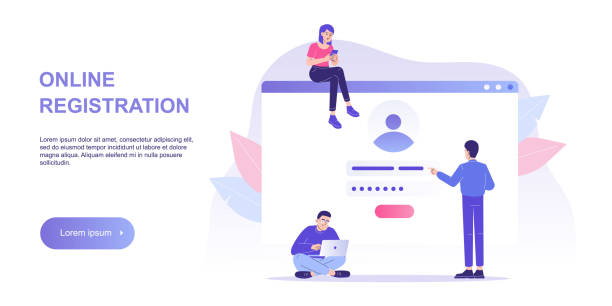An Introduction to the Importance of Modern UI Website Design

In today’s digital world, where competition to attract and retain users is unprecedented, #Website_Design with a #Modern_User_Interface is no longer a luxury option, but an undeniable necessity.
Your website is the first point of contact for many customers with your business, and an attractive, user-friendly interface can make the difference between success and failure.
Modern UI website design goes beyond visual appeal; it is a comprehensive approach that focuses on ease of use, interactivity, and creating an enjoyable experience for the user.
The main goal is to reduce user friction and increase conversion rates.
Modern web design means utilizing the latest design trends, new technologies, and a deep understanding of user psychology.
This field is constantly evolving and includes numerous elements such as responsive design, subtle animations, the use of white space, readable typography, and attractive color palettes.
A website with a modern UI not only looks beautiful but also performs flawlessly and encourages users to stay longer and explore.
In this article, we will examine various aspects of this field and introduce you to its principles step by step.
Understanding these fundamentals is crucial for any business looking to strengthen its online presence.
User Experience (UX) optimization goes hand in hand with User Interface (UI) design, and both are essential for achieving a successful website.
Without strong UX, even the most beautiful UI can frustrate users.
Together, they ensure that users not only enjoy the appearance of your website but can also easily achieve their goals and find the information they need.
Does your current website convert visitors into customers or drive them away? Solve this problem forever with professional corporate website design by Rasaweb!
✅ Build strong credibility and branding
✅ Attract target customers and increase sales
⚡ Get a free consultation now!
Key Principles of User Experience (UX) and User Interface (UI)

To achieve modern UI website design, one must be familiar with the fundamental principles of User Experience (UX) and User Interface (UI).
UX means a deep understanding of users’ needs, behaviors, and emotions.
This includes research, testing, and continuous improvement of the user flow on the site.
In contrast, UI deals with the visual and interactive elements of the website, such as buttons, forms, fonts, and colors.
These two complement each other; UX draws the roadmap, and UI transforms it into a visual reality.
One of the most important principles in modern web design is simplicity and clarity.
Users should not be confused when looking for information or performing an action on your site.
Every element should have a clear purpose and be easily understandable.
Another principle is consistency; similar elements should function and appear the same throughout the website so that users feel familiarity and confidence.
Feedback is also vital.
Users should always be aware of the status of their interactions, for example, receiving a message indicating the success or failure of an operation after clicking a button.
Attractive UI design also emphasizes accessibility, meaning the site should be usable for people with various abilities, including those with disabilities.
This includes using appropriate color contrast, alternative text for images, and keyboard navigation.
Adhering to these principles lays the foundation for a powerful and effective website that is not only beautiful but also valuable to its users.
Tools and Technologies Required for Modern Design
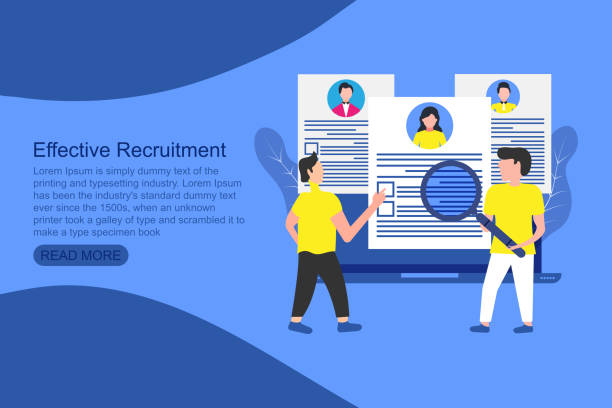
Modern UI website design requires familiarity with a set of advanced tools and technologies.
From graphic design software to web development frameworks, each plays an important role in the process of developing interactive websites.
For the design phase, tools such as Figma, Adobe XD, and Sketch are very popular.
These tools enable wireframing, prototyping, and live team collaboration, which significantly speeds up the design process.
In the front-end, HTML, CSS, and JavaScript are the backbone of every website.
However, to accelerate the process of creating visual websites and improve code maintainability, frameworks and libraries like React, Vue.js, and Angular are widely used.
These frameworks offer powerful tools for building complex and dynamic user interfaces.
Additionally, CSS Preprocessors such as Sass and Less help organize and scale CSS code.
For package and dependency management, Node.js and npm (or Yarn) are essential.
Git is also considered a standard for version control and team collaboration in large modern UI website projects.
The correct selection of these tools not only boosts developers’ efficiency but also helps create a robust, scalable, and high-performance website.
Continuous knowledge of these evolving tools is crucial for any modern web design specialist.
| Category | Tool/Technology | Primary Use |
|---|---|---|
| UI/UX Design | Figma, Adobe XD, Sketch | Wireframing, Prototyping, User Interface Design |
| Front-end Frameworks | React, Vue.js, Angular | Building Dynamic UIs and SPAs |
| CSS Preprocessors | Sass, Less | Managing and Organizing CSS Code |
| Version Control | Git | Managing Code Changes and Team Collaboration |
| Package Management | npm, Yarn | Installing and Managing Libraries and Frameworks |
The Role of User Research in Successful UI Design
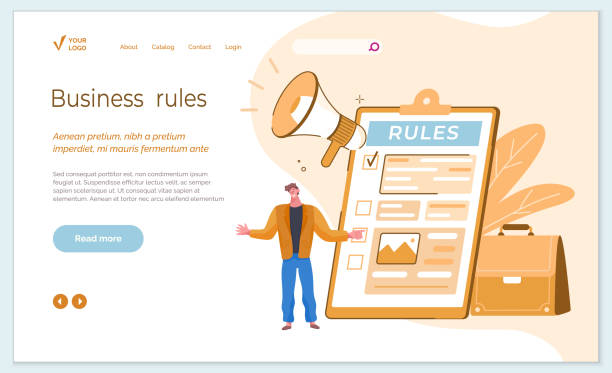
One of the most important stages in the modern UI website design process is conducting comprehensive user research.
Without a deep understanding of who your users are, what their needs are, and how they interact with your website, achieving an advanced user experience is nearly impossible.
This stage includes various methods such as user interviews, surveys, focus groups, and observing user behavior in real environments.
User research helps designers challenge their assumptions about users and gain valuable insights.
For example, you might discover that your users take a different path to achieve a specific goal or have difficulty with a particular element in your user interface.
These insights can lead to important design changes that directly impact user satisfaction and, ultimately, business goals.
Additionally, creating personas (fictional user characters based on real data) and User Journey Maps are other important outcomes of user research.
Personas help designers empathize with their users and better understand their needs, while user journey maps illustrate the various touchpoints a user has with the website and their emotions at each stage.
These tools are crucial for the modern UI website design team, as they ensure that the design is based on real data and user needs, not speculation.
This data-driven approach guarantees user experience optimization.
Did you know that 85% of customers check your company’s website before any interaction?
With Rasaweb, build a corporate website that truly reflects your credibility.
✅ Increase credibility and customer trust
✅ Attract high-quality leads
⚡ Get a free website design consultation!
The Importance of Responsive Design and Mobile-First Approach

In the current era, where the vast majority of internet users access websites via mobile devices, modern UI website design is practically meaningless without responsive design and a mobile-first approach.
Responsive design means that your website should be able to adjust its appearance and functionality to the screen size of the user’s device (from desktop to tablet and mobile), without compromising the user experience.
This ensures that users have the best possible experience, regardless of the device they use.
The Mobile-First approach goes a step further.
In this approach, the design and development process begins with smaller screens (mobile) and then progressively scales up for larger screens (tablet and desktop).
The reason for this is that designing for mobile devices has more limitations in terms of space and resources, and by solving these challenges first, designing for larger devices becomes easier.
This approach ensures that the most important information and functionalities of the website are initially accessible and optimized for mobile users.
Google also prioritizes responsive and mobile-friendly websites, and this directly impacts your website’s SEO (Search Engine Optimization).
A website with modern web design that is not optimized for mobile will not only offer a poor user experience but will also perform poorly in search engine rankings.
Therefore, investing in responsive design and adopting a mobile-first approach is crucial for the success of any website in today’s world.
The Role of Visual Elements and Aesthetics in User Attraction

Alongside functionality and usability, visual elements and aesthetics play a pivotal role in modern UI website design.
An appealing visual design not only makes the first impression on the user but can also evoke a sense of trust, professionalism, and even delight.
Color palettes, typography, white space, images, and animations are all tools designers use to create visual websites and an unforgettable experience.
Choosing the right color palette can evoke specific emotions in users and reflect your brand’s identity.
Intelligent use of white space (Whitespace) allows visual elements to breathe and prevents clutter in the user interface, which helps improve readability and usability.
Typography is also of paramount importance; readable fonts, appropriate visual hierarchy, and optimized font sizes enhance the reading experience for users.
High-quality images and videos not only increase the visual appeal of the site but can also convey your message more effectively.
Subtle and functional animations, such as attractive loading states or visual feedback when clicking buttons, can increase the sense of interactivity and make the user experience more dynamic and engaging.
However, it is important not to overuse animations so that the site’s loading speed is not affected.
The balance between aesthetics and performance is the key to attractive UI design, which directly impacts the success of modern web design.
Website Performance Optimization for Better User Experience
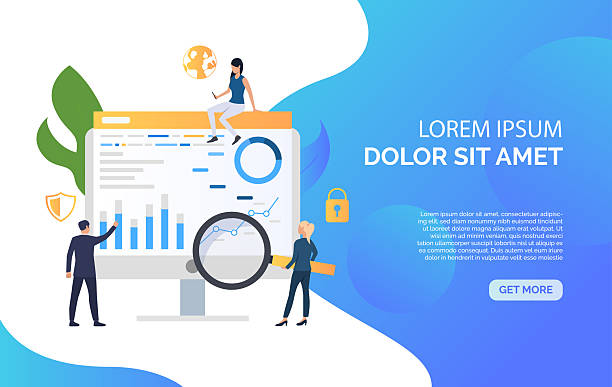
One of the critical aspects of modern UI website design is optimizing website performance and loading speed.
Even the most beautiful and user-friendly design will frustrate users and lead to site abandonment if it loads slowly.
Research shows that most users expect a website to load in less than 2-3 seconds, and any further delay can lead to a high bounce rate and reduced conversion rates.
Several factors influence website loading speed.
Image optimization (compressing without loss of quality), minification of CSS, JavaScript, and HTML codes, utilizing Content Delivery Networks (CDNs), and caching are among the most important techniques.
A CDN stores your website’s content on multiple servers worldwide, delivering content from the server closest to the user, which significantly increases loading speed.
Caching also allows the user’s browser to store static site files, eliminating the need to re-download them on subsequent visits.
Furthermore, choosing appropriate hosting and optimizing backend code also play a significant role in overall website performance.
Tools like Google PageSpeed Insights and Lighthouse can help you identify your website’s performance weaknesses and find solutions for improvement.
Investing in user experience optimization through speed directly impacts SEO and user satisfaction, and is one of the pillars of modern UI website design.
| Technique | Description | Benefit |
|---|---|---|
| Image Optimization | Compression and use of modern formats (WebP) | Reduced file size, faster loading speed |
| Code Minification | Removing white spaces and extra characters from CSS/JS/HTML | Reduced code size, faster loading |
| Using CDN | Distributing content across global servers | Reduced content access time, increased global speed |
| Caching | Storing files in the user’s browser | Faster loading on repeated visits |
| Lazy Loading | Loading content only when needed (on scroll) | Reduced initial page load, improved Core Web Vitals |
Accessibility in Modern Website Design
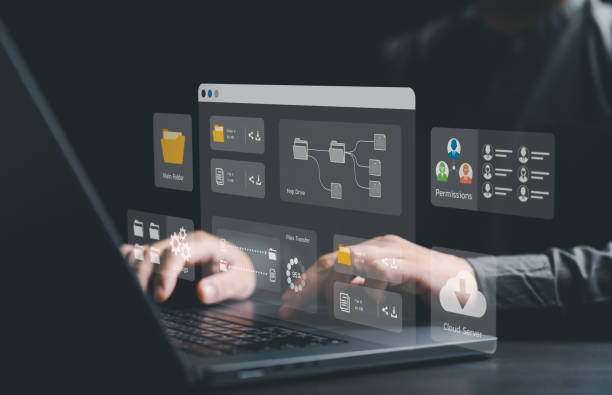
Accessibility is a vital and ethical aspect of modern UI website design that is often overlooked.
Simply put, accessibility means that your website should be usable by all people, regardless of their abilities.
This includes individuals with visual, auditory, motor, or cognitive disabilities.
Ignoring accessibility not only deprives you of the opportunity to attract a large segment of the audience but can also lead to legal issues and decreased brand credibility.
The principles of accessibility are based on four main pillars: Perceivable, Operable, Understandable, and Robust.
For example, for visually impaired individuals, appropriate color contrast between text and background should be used, and text enlargement should be possible.
For blind individuals, using alternative text (alt text) for images and ensuring that the website is navigable via screen readers is essential.
For individuals with motor disabilities, full website navigation should be possible using only the keyboard (without needing a mouse).
Modern web design that considers accessibility also means providing clear explanations for forms, understandable feedback for errors, and avoiding distracting animations.
Adhering to WCAG (Web Content Accessibility Guidelines) standards and guidelines can be a good guide to ensuring your website’s accessibility.
This action not only benefits users but also improves your site’s SEO and the credibility of your modern UI website design.
Does your current website convert visitors into customers or drive them away? Solve this problem forever with professional corporate website design by Rasaweb!
✅ Build strong credibility and branding
✅ Attract target customers and increase sales
⚡ Get a free consultation now!
Emerging Trends and the Future of UI Design

The world of modern UI website design is rapidly evolving, with new trends constantly emerging that elevate the user experience to higher levels.
One of the most important current trends is the increased use of Artificial Intelligence (AI) and Machine Learning (ML) for personalizing the user experience.
These technologies can analyze user behavior and suggest relevant content, products, or services, leading to an advanced and highly personalized user experience.
Another trend is the increasing use of Dark Mode, which is not only beneficial for reducing eye strain in low-light environments but also reduces battery consumption on OLED devices.
3D design and the use of Augmented Reality (AR) and Virtual Reality (VR) are also finding their place in websites, especially in areas like e-commerce, where they allow users to view products in a 3D space.
These elements make the experience much more engaging.
Furthermore, minimalistic design and the use of Micro-interactions (small, subtle interactions like an icon changing color on mouse hover) remain popular, as they help create clean, efficient, and attractive user interfaces.
Interactive website development is moving towards greater immersion and reduced complexity.
Given these trends, the future of modern web design looks very exciting and offers designers and developers unparalleled opportunities for innovation.
By being aware of these trends, we can build websites that not only meet today’s needs but are also ready for tomorrow’s challenges.
Conclusion and the Future of Web Design with Modern UI

In this article, we explored various dimensions of modern UI website design, analyzing its importance in attracting and retaining users, key UX/UI principles, tools and technologies, the role of user research, the significance of responsive design, visual aesthetics, performance optimization, and accessibility.
What emerges from these discussions is that modern web design is a comprehensive and multifaceted process that goes beyond mere visual appeal, focusing on creating a user-friendly, efficient, and enjoyable experience.
The future of modern UI website design is moving towards greater personalization, richer interactions, and broader use of emerging technologies such as artificial intelligence and extended realities (XR).
Given the rapid pace of change in the digital world, designers and developers must constantly learn and update their knowledge to build websites that are not only visually appealing but also functionally flawless and meet the evolving needs of users.
Modern UI website design is no longer an option, but a requirement for any business that wants to succeed in the competitive online space.
By focusing on the user and utilizing innovative design approaches, we can create websites that not only help achieve our business goals but also bring real value to users.
Ultimately, success in this field depends on our ability to understand and anticipate user needs and translate them into an advanced user experience.
Frequently Asked Questions
| Question | Answer |
|---|---|
| What is modern UI website design? | It’s an approach that focuses on simplicity, visual appeal, user-friendliness, and utilizing the latest design trends. |
| What are the key principles of modern UI? | Simplicity, clarity, accessibility, responsiveness, and a focus on user experience. |
| Why is the use of white space (Whitespace) important in modern design? | White space helps with readability, user focus on content, and creating a sense of order and aesthetics. |
| What is the role of typography in modern UI? | Choosing the right font greatly helps with brand identity, text readability, and creating visual hierarchy. |
| How can colors be used effectively in modern design? | Strategic use of an appropriate color palette to guide the user’s eye, create brand mood, and improve accessibility. |
| What role do visual elements like icons and images play? | These elements contribute to visual appeal, quick message transfer, and improved user understanding of content. |
| What is the importance of responsiveness in modern design? | It’s essential for the site to have an optimal appearance and correct functionality on all devices such as mobile, tablet, and desktop. |
| How does modern UI contribute to User Experience (UX)? | By creating an attractive and user-friendly visual environment, easier navigation, and more enjoyable interaction, the overall user experience is improved. |
| What are some common trends in modern UI? | Dark Mode, Neomorphism, Glassmorphism, subtle animations, and micro-interactions. |
| What steps are necessary to achieve a modern UI? | User research, wireframing and prototyping, user testing, and using up-to-date tools and frameworks. |
And other services of Rasaweb Advertising Agency in the field of advertising
Smart Marketing Automation: An innovative platform for improving campaign management with marketing automation.
Smart Conversion Rate Optimization: Designed for businesses seeking online growth through custom programming.
Smart Customer Journey Map: A fast and efficient solution for increasing sales with a focus on custom programming.
Smart Data Analysis: An innovative platform for improving SEO ranking through Google Ads management.
Smart UI/UX: A specialized service for growth in customer behavior analysis based on marketing automation.
And over a hundred other services in the field of internet advertising, advertising consulting, and organizational solutions
Internet Advertising | Advertising Strategy | Advertorial
Sources
Webineh Website DesignIran WS Web Design ServicesRahkar Modern UI ArticlesSite Baran Website Building Tutorial
? For your business to shine in the digital world, Rasaweb Afarin Digital Marketing Agency, with expertise in professional website design, SEO, and comprehensive digital marketing strategies, paves your path to success.
📍 Tehran, Mirdamad Street, next to Central Bank, Southern Kazeroun Alley, Ramin Alley, No. 6




